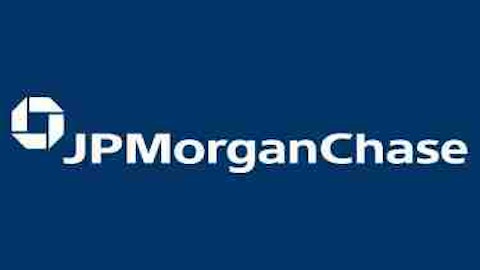There are two income mutual funds that pursue stocks of companies with solid dividend payout ratios and consistent dividend growth of at least 5 years in a row. These funds are ASTON/River Road Dividend All Cap Value Fund (ARDEX)(ARIDX) and ASTON/River Road Dividend All Cap Value Fund II (ADVTX)(ADIVX). The two funds have similar compositions. The first fund is closed to new investments, but the second remains open to new money. More information about the featured funds, including their expense ratios, performance statistics, and holdings, can be found at the links to Fund I and Fund II. The first fund has achieved alpha of more than 3% for its two share classes over the past three years.
The two featured funds target companies with dividend yields of 3% or more, boasting financial strength through a significant free cash flow and reasonable debt. Their picks represent companies with “sustainable, predictable, and understandable business models” and shareholder-friendly management. At the time of inclusion into the funds, all selected stocks had a minimum 15% discount to the estimates of their absolute values. Seeking stocks of companies with these qualities, we took a look at five of the top 10 holdings in the alpha-generating ASTON/River Road Dividend All Cap Value Fund. The selection includes some value stocks with strong income potential and the capacity for capital appreciation in the future.

The ensuing improvement in the U.S. job market will bode well for the company, which has proven to be highly resilient to downturns, sustaining average profitability and dividends even in dismal macroeconomic settings. The stock is somewhat pricey, trading at 20.1x its forward earnings, on par with its main rival Paychex, Inc. (NASDAQ:PAYX). First Eagle Investment Management held more than $191 million in ADP stock at the end of the third quarter of 2012.
BlackRock, Inc. (NYSE:BLK), the world’s largest asset manager, has a dividend yield of 2.8%, a payout ratio of 43% of the current-year EPS estimate, and five-year annualized dividend growth of nearly 24%. The company recently reported financial results that beat analyst expectations amid revenue growth and the expansion in assets under management. As the equity ETF-heavy asset manager, BlackRock has greatly benefited from the recent flood of inflows into equity funds. In the long run, the secular shift into passively-managed funds will be a catalyst for Blackrock’s robust growth, with the firm’s EPS CAGR forecasted at 12.0% annually for the next five years.
Over the past three months, the company has seen upward EPS estimate revisions for both 2013 and 2014 by 3.5% and 4.7%, respectively. The stock is trading at a new multi-year high, and the company has just raised its dividend by 12%. According to Investor’s Business Daily reporting, “the number of U.S. mutual and hedge funds with a stake (in BLK) has increased for eight quarters in a row.” The stock is trading at 15.1x forward earnings, about on par with its respective industry. BLK was popular with Highfields Capital’s Jonathon Jacobson in the third quarter of 2012.
Intel Corporation (NASDAQ:INTC), the world’s largest chip maker, has a dividend yield of 4.2%, a payout ratio of 46% of the current-year EPS estimate, and five-year annualized dividend growth of nearly 13.0%. The company has fared well, posting a modest revenue decline last year, despite a deep secular decline of the PC market. Still, a projected recovery in the chip market in 2013, with semiconductor revenue rising 4.5%, according to research firm Gartner, will improve Intel’s prospects. In the long-term, the company is expected to see the EPS CAGR of 9.6%, but its success will hinge on its ability to prosper in the mobile market.
The company has already made a foray into the mobile market, albeit its mobile presence has been modest at best. In recent years, the company shifted its focus to mobile applications by acquiring Infineon Technologies’ wireless chip business in 2011 and introducing phones with Intel chips in several markets, including Europe, Africa, Latin America, Russia, India and China. These measures are expected to gain more traction in the years ahead. The stock is undervalued, given its high yield and forward P/E of 10.9x, almost half that of the semiconductor industry multiple. In the third quarter of 2012, Ken Fisher and Jim Simons marginally increased their large stakes in INTC, while Jean-Marie Eveillard and Paul Ruddock reduced their positions.
United Parcel Service, Inc. (NYSE:UPS)., a package delivery company, has a dividend yield of 2.9%, a payout ratio of 45% of the current-year EPS estimate, and five-year annualized dividend growth of 4.1%. The company recently reported earnings that missed analyst expectations. It also guided 2013 EPS below consensus, with 2013 adjusted EPS of between $4.80 and $5.06, an increase of 6%-to-12% over 2012, but below the analyst projections of $5.13 per share. The company’s EPS estimates have thus been revised downward. However, despite the missed expectations, the company’s forecasted EPS growth is still robust given the relatively weak economic backdrop (UPS sees 2.0% growth in the U.S. economy and 2.5% globally). As the U.S. economy picks up pace in the second half of this year, the UPS estimates could move higher. In general, analysts expect the company to grow its EPS at a long-term CAGR of 10.3%. Trading at 15.7x forward earnings, slightly below its industry multiple of 16.0x, the stock is priced well below its five-year P/E multiple. However, it looks expensive based on a price-to-book of 10.1 versus the industry’s 4.6 and its own five-year average of 8.8. In the third quarter last year, Greenhaven Associate’s Edgar Wachenheim held more than $280 million in the stock.
Norfolk Southern Corp. (NYSE:NSC), a rail transportation company, has a dividend yield of 2.9%, a payout ratio of 36% of the current-year EPS estimate, and five-year annualized dividend growth of 13.5%. The company has raised dividends for 11 consecutive years. It is one of a few companies that have raised dividends by more than 10% annually over at least the past 10 years. The prospects for continued robust dividend growth are good, given that analysts expect NSC’s long-term EPS growth to average 10.3% annually. Still, the company posted a 3% decline in fourth-quarter 2012 revenues, driven by a 13% decline in coal shipment volumes. Intermodal traffic was up 4% year-over-year and merchandise traffic grew 1% over the previous year. Still, the outlook for coal shipments is unlikely to improve this year, according to industry sources, as reported in The State Journal.
However, continued growth is expected in the intermodal traffic and merchandise traffic, the latter being driven by the automotive, chemicals, and farm industry growth. Norfolk Southern’s stock repurchase program is also buttressing its EPS growth. The stock is trading at 12.5x forward earnings, below its industry’s 14.5x. It also has a below-industry price-to-book, price-to-sales, and price-to-cash flow ratios. Its PEG is 1.1. Fund managers Bill Miller (Legg Mason Capital), D. E. Shaw, and Daniel Bubis (Tetrem Capital) all reduced their holdings in NSC in the third quarter of last year. In contrast, Cliff Asness increased his stake.
The article 5 Dividend Stocks from Alpha-Generating All Cap Value Fund originally appeared on Fool.com and is written by Jake Mann.
Copyright © 1995 – 2013 The Motley Fool, LLC. All rights reserved. The Motley Fool has a disclosure policy.





